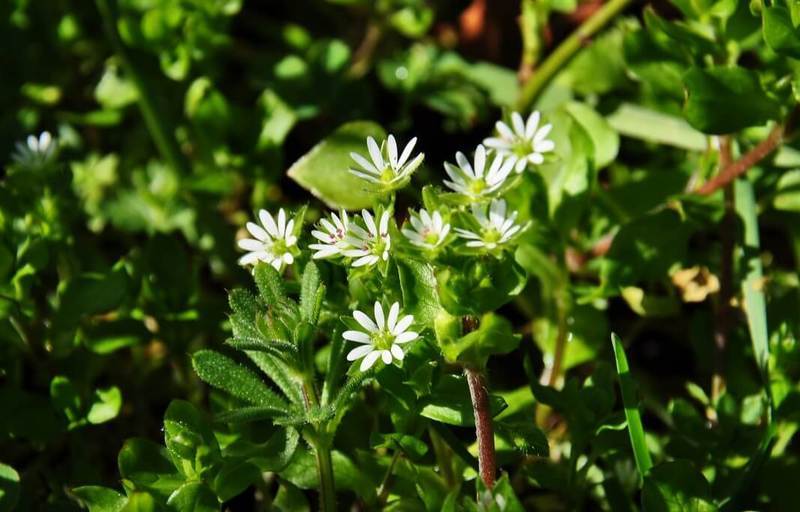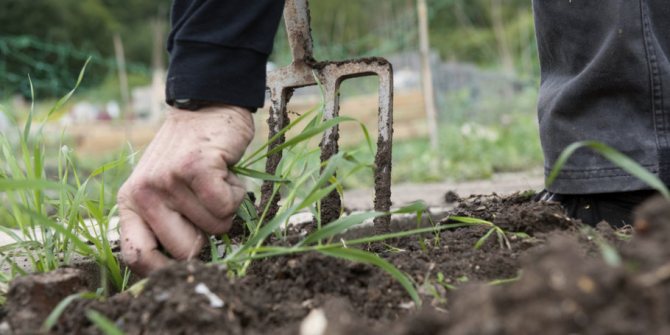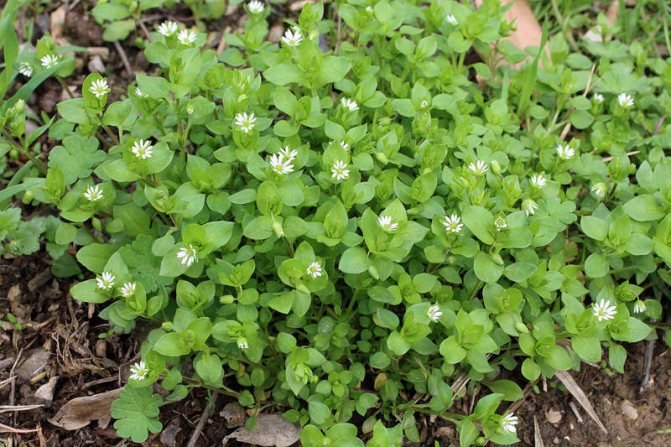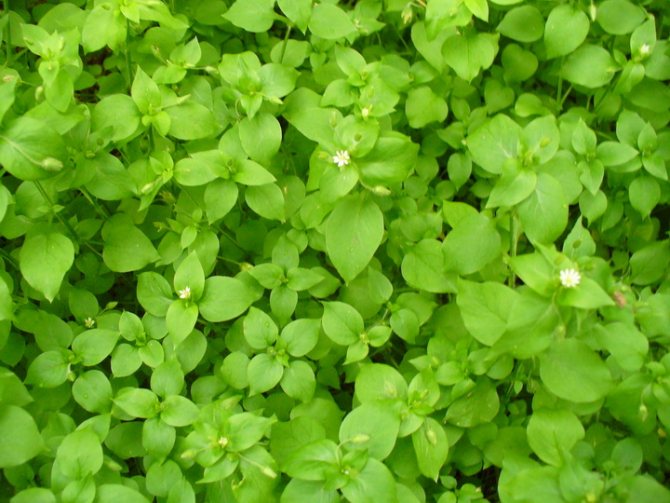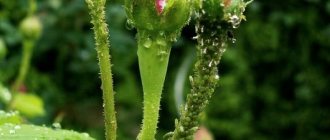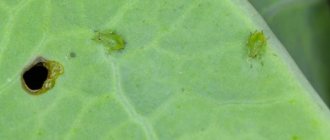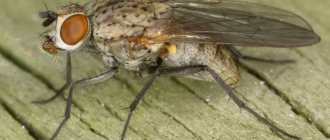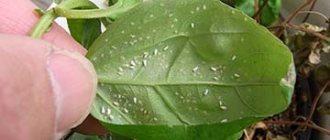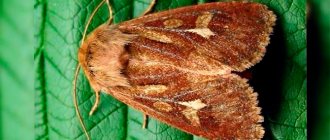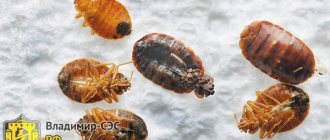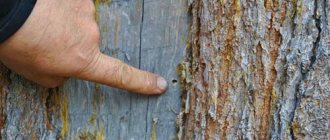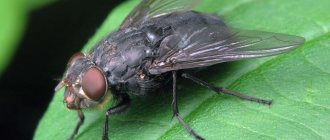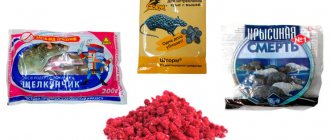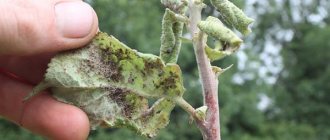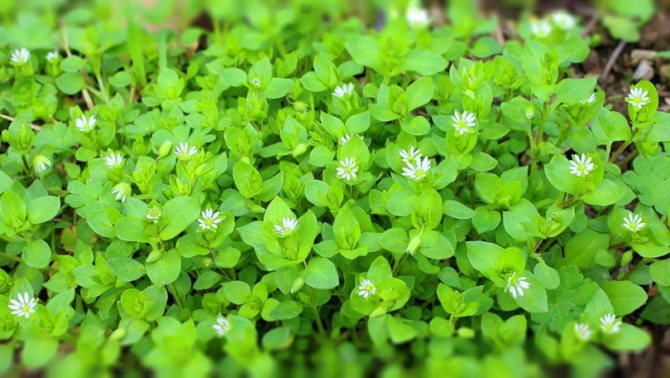
The fight against weeds in the garden is an eternal problem. On the ennobled territory, I want to create optimal conditions for garden crops and get a decent harvest, and the weed, including wood lice, opposes this in every possible way, taking away food and space from vegetables. How to get rid of woodlice on a site forever is a task, the solution of which requires some effort.
Wood lice plant information
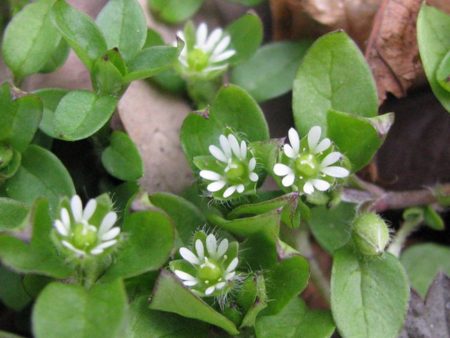

The scientific name of the common woodlice is the average starfish. Its other names are associated with some medicinal properties and a predisposition to rapid growth on wet soils - woodworm, mockworm, bummer, hernia, heart grass.
Herbaceous low plant has succulent stems and small rounded leaves. It blooms throughout the growing season with small, asterisk-like, white flowers. It takes 4-5 weeks from the beginning of flowering to full ripening of the seeds, then the next cycle begins, and so on for the entire growing season. About 15,000 seeds can ripen on one bush per season.
Information!
The seeds are very resistant to external factors and for a long time, from 2 to 5 years, remain in the soil, remaining viable. For germination, a temperature of + 4 ° C is enough for them, so they germinate earlier than other plants.
Soil liming
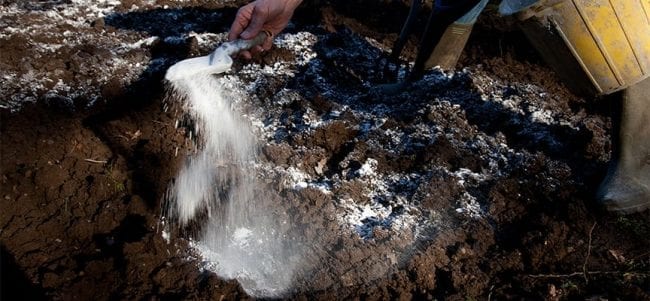

Liming the soil with digging from woodlice
The weed actively reproduces in an acidic or strongly acidic environment. Liming will "deacidify" the soil. To bring the pH balance of the soil to a neutral level, take chalk, dolomite flour, ash. Lime fertilizers will reduce acidity, improve the soil. This will slow down the development of woodlice and other weed species.
Carry out liming of the soil in the fall or in the spring - with digging. Dissolve 1 cup of ash in a bucket of water, pour the solution over the soil, or use a solution of water, lime and sulfur. Fertilizers will help defeat the acidic environment. Please note that vegetable crops can be harmed, so do not carry out work during the period of development and fruiting.
Mechanical impact and agrotechnical measures
Weed removal work should begin in early spring, when the soil has just thawed and the plant has not begun its growing season.
Stages of mechanical action:
- digging and loosening the soil with the simultaneous removal of weed roots, plant residues;
- initial weeding of the emerging shoots or, if possible, loosening with the removal of roots;
- further during the season, weeding should be carried out regularly as new shoots appear, using a narrow spatula or a special tool for removing roots;
- after harvesting, dig up the soil, remove all small roots, otherwise in the spring they will take root and sprout again.
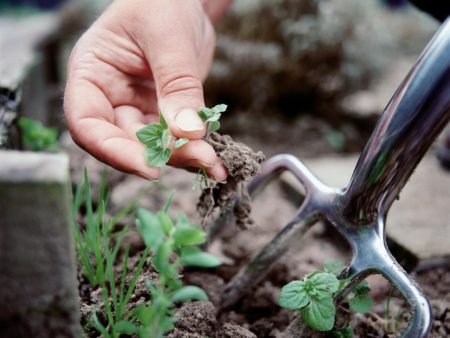

It is recommended to dig up with a pitchfork in order to less damage the roots, the particles of which remain in the ground.
After each weeding, all plant residues must be removed, otherwise it will be difficult to get rid of woodlice in the garden - any remaining root or stem will give rise to a new plant. It is not recommended to remove wood lice in the compost - tenacious seeds will not lose germination during its preparation.
Of course, weeding and manual processing of ridges is physically costly work, but its annual implementation will lead to almost complete removal of the weed. Subsequently, it will be necessary to avoid getting into the soil (on the soil) of plant residues with woodlice seeds.
How to reduce soil acidity


Regular mechanical action in combination with a decrease in acidity can give very good results.
One of the most effective ways to reduce acidity is to apply lime. It is best to introduce it during the autumn digging of the site after harvesting. The amount of lime depends on the level of acidity of the soil - add 60 kg per hundred square meters to very acidic, 45 kg to medium acid, and 30 kg to slightly acidic.
Also, a good result is obtained by adding slaked lime during spring digging - 50-150 g per 1m². Slaked lime is obtained by adding water to lime.
To reduce acidity, it is convenient, just before planting, to use dolomite flour - it is not capable, like lime, to burn the roots and stems. The rate per 1m² for acidic soil is 500-600 g, medium acidic - 400-500 g, slightly acidic - 300-400 g.
Important!
The acidity of the soil is restored over time, so deoxidation is required every year.
Mulching
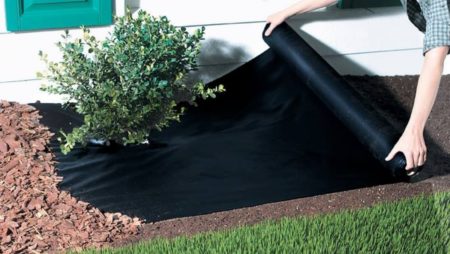

Mulching is blocking the access of light to weeds (and not only) plants. In the dark, the process of photosynthesis stops, which leads to the death of not only the aerial part, but also the roots. Any material that does not transmit light is suitable as mulch: roofing material, black film, boards, old linoleum, agrofibre.
You can use an organic coating, for example, grass, leaves, hay, pouring it in a layer of 10 cm. In this case, when overheated, it will also serve as a source of nutrients.
This method takes a long time - from the area covered in spring, the coating can only be removed next summer.
Mulching can be carried out partially by pouring a layer of mulch around the plant or cutting holes for it in the film - the cultivated plant will receive both nutrition and the necessary lighting.
Universal recipe
Boric acid is used to combat insects with a chitinous shell. The product is practically not dangerous for humans and animals. It can be used in a diluted form and for the preparation of poisonous baits.
For the treatment of places where pests live, boric acid can be diluted with water (10 g per liter). Spray wet areas in the area with a spray gun. A couple of procedures with an interval of a week is enough to get rid of wood lice for a long time.


Stages of preparation of bait based on boric acid
The second way that will help drive pests from the site is to make food for wood lice. Mix a few grams of boric acid with the yolk of a hard-boiled chicken egg. Any grated vegetables can be used. Add a few drops of vegetable oil to add stickiness and extra flavor.
The bait is laid out in damp places in the late afternoon. The woodlice that emerged from the shelters at night will surely taste the food prepared for them. After a few days, food can be added if there are too many pests. Experience shows that wood lice rarely harm plantings in the beds. They cannot bite or infect anything. But the sight of swarming gray centipedes is very unpleasant.
The use of chemicals
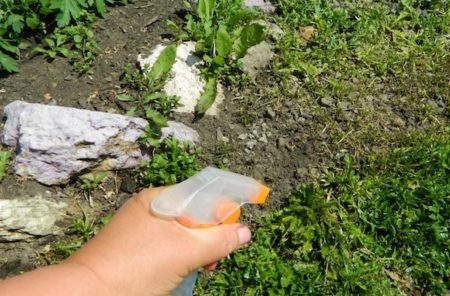

Depending on the area occupied by weeds and the proximity to other plants, it is sometimes convenient to use herbicides, for example, Tornado, Hurricane.
Plants 5-10 cm tall are subject to processing. If the area is large, then spraying with a solution of 120 ml of the drug and 5 liters of water is carried out, but if the plants are single or there is a fear of damaging neighboring crops, then the treatment can be carried out with a brush.
All work with chemicals must be carried out with gloves and special clothing.
Reference!
Herbicides have a detrimental effect not only on weeds, but also on other plants and do not affect the seeds in the soil.
Description
There are over 3 thousand species of this weed in the world, but the most famous and widespread of them are: Bunge and Martyanova stellate, forest, marsh, squat, long-leaved, fluffy, cereal, marsh.
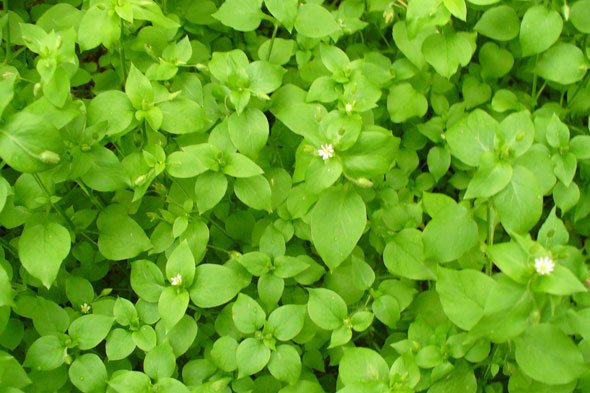

Woodlice have a fairly long flowering period: from May to August. In place of flowers, dark brown bolls are gradually formed, in which the seeds are located, and wood lice reproduce by them. For several years, its seeds can be in the ground in a living state and not die even from very severe frosts.
Another way to spread it is by dividing the bush.
Woodlouse is the worst enemy of any summer resident, because it gives him a lot of trouble due to the fact that it spreads very quickly throughout the site and prevents vegetable and berry crops from growing in comfortable conditions.
Therefore, the issue of getting rid of wood lice from the site is quite relevant in the summer season.
Folk ways against woodlice
In the fight against any weeds, they have always used folk remedies that do not harm the soil, garden plants and humans:
- water the areas overgrown with woodlice with a strong saline solution (paths, empty spaces, but not the beds where vegetables grow), or sprinkle dry salt at the rate of 1.5 kg per 1m²;
- spray weed thickets with a composition - vinegar and water, 2 cups each + 1 sachet of citric acid + 30 g of alcohol + 2 tsp. detergent, trying not to get on planting vegetables;
- spray the seedlings of woodlice with a saturated soda solution (no closer than 20 cm to cultivated plants);
- use herbicidal soap for processing - a mixture of equal parts of salt, vinegar and crushed laundry soap.
Preventive measures against reappearance
To reduce the risk of woodlice growth, preventive measures should be taken:
- cover the soil with mulch, for which hay or grass is used (but not sawdust, since they increase the acidity of the soil);
- after harvesting, sow the area with rye, barley or mustard;
- change the location of crops.
These actions do not guarantee a 100% result, but the likelihood of weed growth is reduced. In addition, when the first plant shoots appear, it must be removed immediately.
Weeding
Don't underestimate woodlice. Removing weeds from your garden won't be quick or easy. Only regular and versatile prevention of the appearance is effective. The most common and fairly effective way to kill woodlice is weeding. However, weeding will not completely destroy the grass if the summoned plants are left on the site. Even crushed particles can take root when exposed to water. Not to mention the fact that wood lice can be re-sown even from the bushes that have been pulled out.
Where do they come from in the greenhouse and in the garden
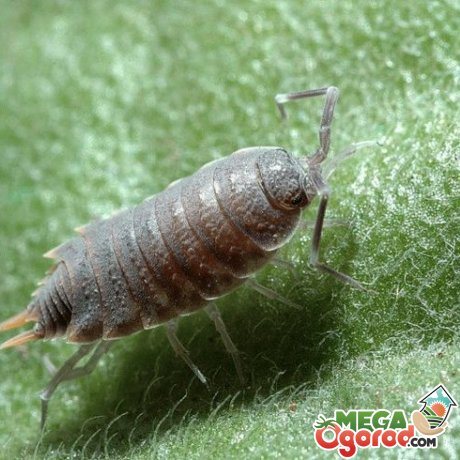

There are several reasons for the appearance of wood lice on the site, in closed rooms:
- The ideal environment for them is humid. Excess moisture is formed not only due to endless rainfall, but due to the leakage of water pipes for watering the garden.
- Unventilated greenhouses with air humidity over 80-90 percent are the best place for wood lice to live and breed.
- Places for collecting garbage at their summer cottage can be an excellent hiding place for crustaceans.
- In compost pits, where the temperature inside does not rise above forty degrees, there is also tasty food for wood lice.
- Pests like to spend the day under the rubble of bricks, pieces of cellophane, in a heap of cut branches in the garden.
- Pests can get into the greenhouse in the spring when transferring land, humus, manure from the garden.
- Stagnant water in basins, flowerpots, buckets attracts crustaceans as the best place to live.
Woodlice live on the banks of rivers and lakes, but they also populate summer cottages, if they are comfortable there - there is where to hide and what to eat.
How to weed wood lice so that it does not grow again
Stems of medium starlet contain a large amount of vitamin C. It is used for the preparation of various medicinal tinctures. Despite these properties, she is an unwanted guest in the garden.
Due to the fact that it grows strongly and tightly covers the ground, garden crops do not receive the necessary sunlight.
The soil of the garden does not warm up properly, and this contributes to the multiplication of various pathogenic bacteria and parasites that prefer a damp environment without circulation of air masses. In large numbers, these microorganisms can cause significant damage to the future harvest.
Star-shaped flowers near the house will help to predict the approach of rain fairly accurately. If in the morning little white stars have not opened, precipitation can be expected within the next 24 hours.
All methods of weed control can be roughly divided into 2 groups.
| Mechanical | Fighting involves weeding, loosening, mulching, deacidification and other manipulations with the soil. |
| Chemical | To destroy weeds, special formulations are used, which can be purchased at garden stores. This includes drugs "Hurricane", "Tornado", etc. For the spraying procedure, you should choose a quiet, windless day, and it is imperative to use overalls. If there are garden crops on the site, spot processing of weeds is carried out. |
We suggest that you familiarize yourself with: Feathering in chickens how to get rid of at home
Each of these methods has its pros and cons, but in any case, in order to achieve the desired effect, the struggle should be carried out persistently and purposefully.
The most primitive and most laborious, nevertheless, a fairly good way to deal with starworms is weeding.
It will be most effective if the following recommendations are followed:
- you need to weed the grass before the seeds ripen;
- with an active struggle, the procedure should be quite regular - at least 1 time per week;
- weeded grass should not be left in the garden. Even small fragments of this plant take root easily, and the work may be in vain. Weeds must be collected and thrown away from the beds. An exception can be made if the summer is dry. In the hot sun, weeded wood lice die quite quickly;
- when weeding, you need to deeply loosen the soil. Seeds sprout if they are no more than 1 cm from the surface. By burying them deeper, you can prevent their emergence;
- after weeding, the soil is covered with black cellophane. The dark color attracts the sun's rays, as a result of which the seeds and stems of the plant remaining on the soil die from drying out.
Despite the laboriousness of the method, it continues to be considered the most useful and environmentally friendly. In the process of weeding, the moisture conductivity and air saturation of the soil improve, the quality of the fertile layer increases.
In addition, there is no factor of aggressive action of herbicides, which, in addition to woodlice, simultaneously destroy a number of bacteria useful for the growth of garden crops.
To get rid of starworms in strawberries and potato fields, you need to thoroughly weed the infected area and cover the ground between the bushes with black cellophane.
For greater effect, you can pour a 1-2-centimeter layer of earth on top. After a while, the cover is removed and the effectiveness of the event is checked. Repeat this procedure if necessary.
Beneficial features
Woodlice cannot be considered only a weed.In addition to harm to growing crops, the average stellate has a lot of useful properties that allow you to use creeping shoots for medicinal purposes.
The wood lice contains:
- Vitamin C. It participates in the synthesis of collagen, which is the basis of joint tissue and cartilage. Its presence in the body normalizes metabolic processes, improves the body's resistance to viruses, helps the work of leukocytes, and stimulates nervous processes in the cerebral cortex.
- Vitamin E. An irreplaceable antioxidant component that activates the growth and development of the human body. Especially necessary for children and expectant mothers. Promotes the normal course of pregnancy, serves as a prophylactic agent to protect against ischemia and oncological formations. It is very important for strengthening immunity, skin health and maintaining physical activity.
- Vitamin K. Without this element, the formation of lung and cardiac tissues is disrupted, and the blood coagulation rate is disrupted.
- Carotene. Participates in the work of the cardiovascular system, normalizes cerebral circulation. Performs an antioxidant function, participates in the removal of harmful substances and toxins from the body.
In addition to the listed components, woodlice is rich in micro- and macroelements, minerals, essential oils, wax, tannins, flavonoids. Such an extensive list of useful substances makes it possible to use the weed for various disorders in the body.
Preparations made from woody stems are used for:
- metabolic disorders;
- diagnosed arthrosis;
- weakened immunity;
- cleansing procedures from toxins and toxins;
- prevention of ischemia, cancer problems;
- disorders of cerebral circulation and blood pressure readings;
- gynecological problems.
The weed is used in the form of infusions, decoctions, compresses.
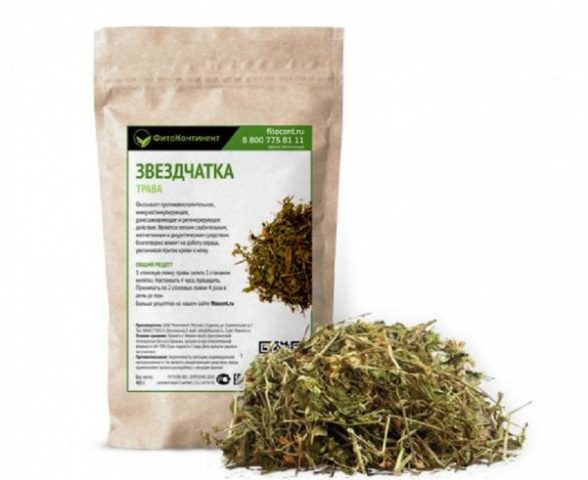

More on the beneficial qualities of woodlice:

